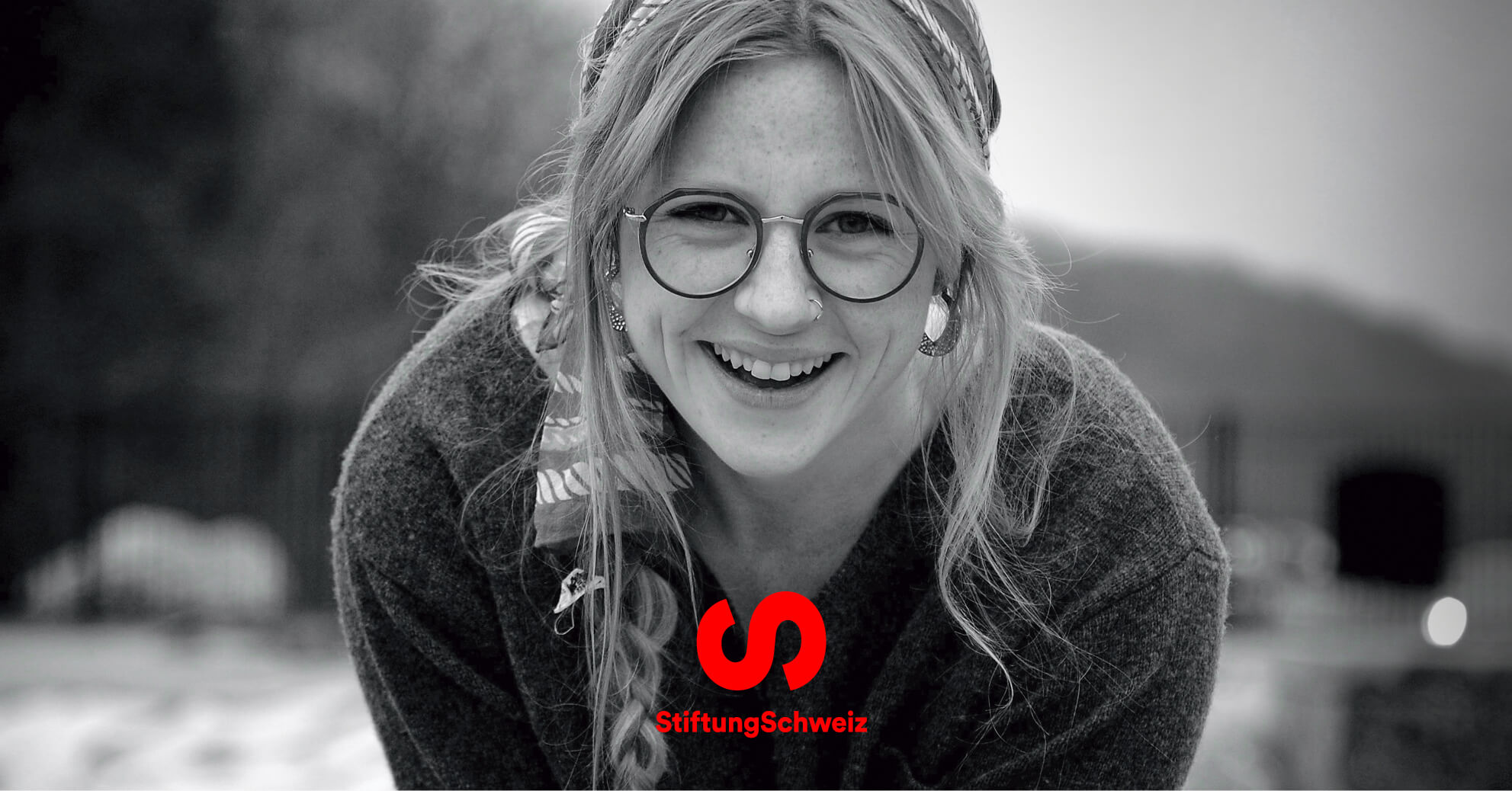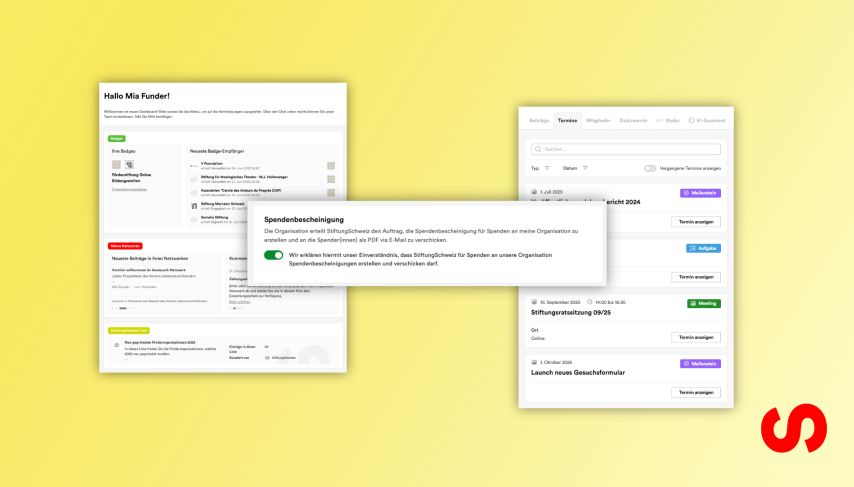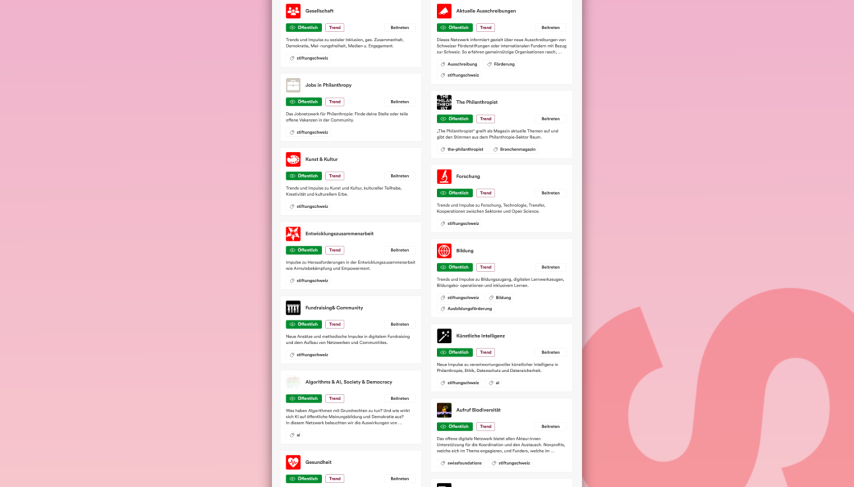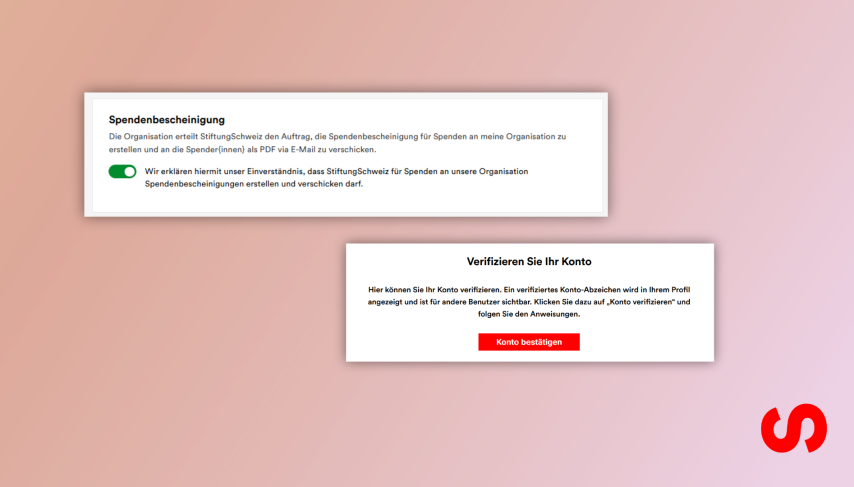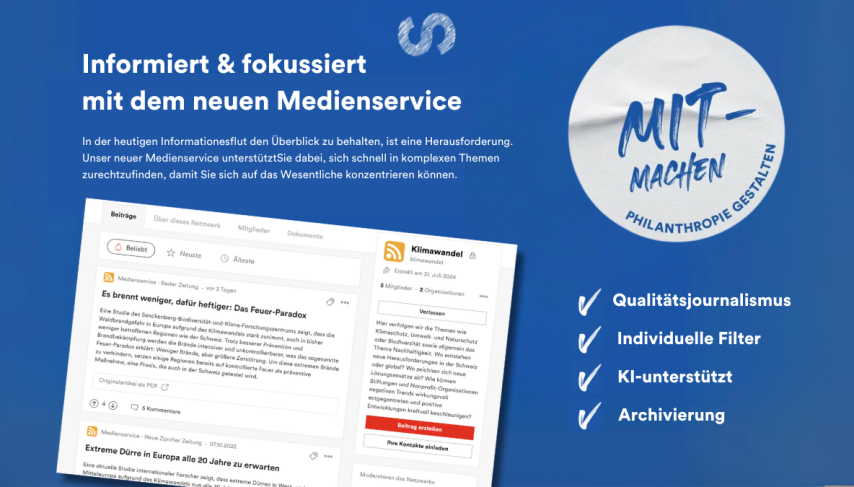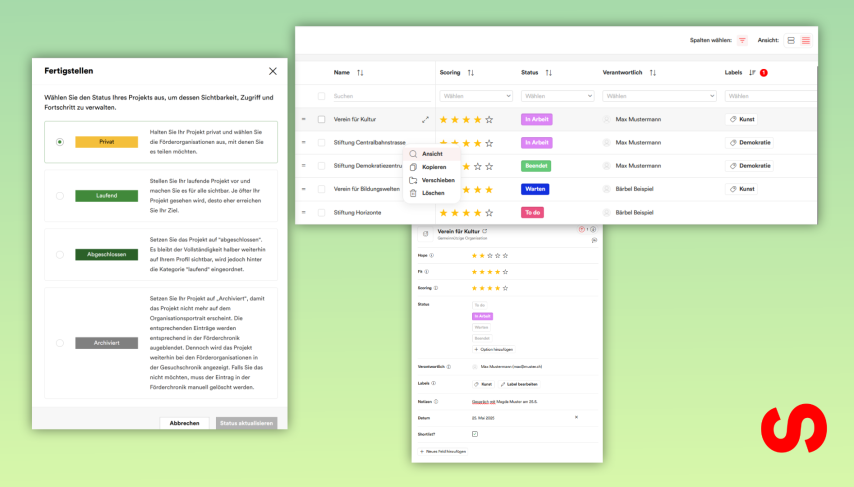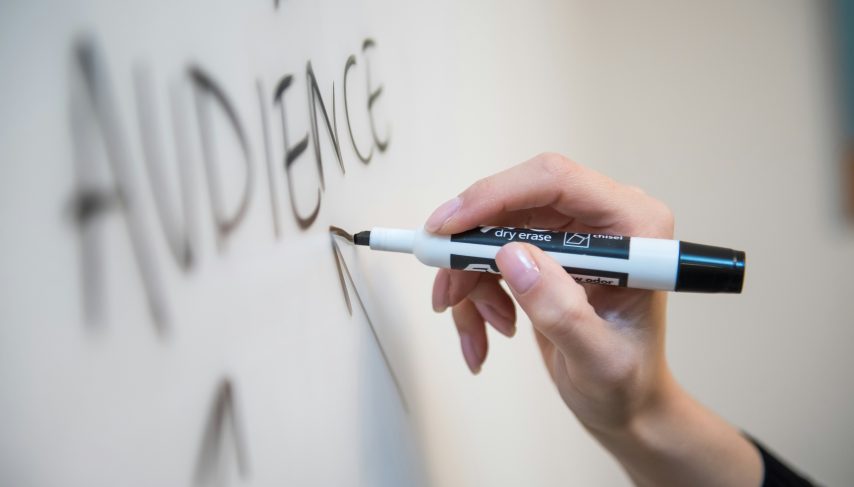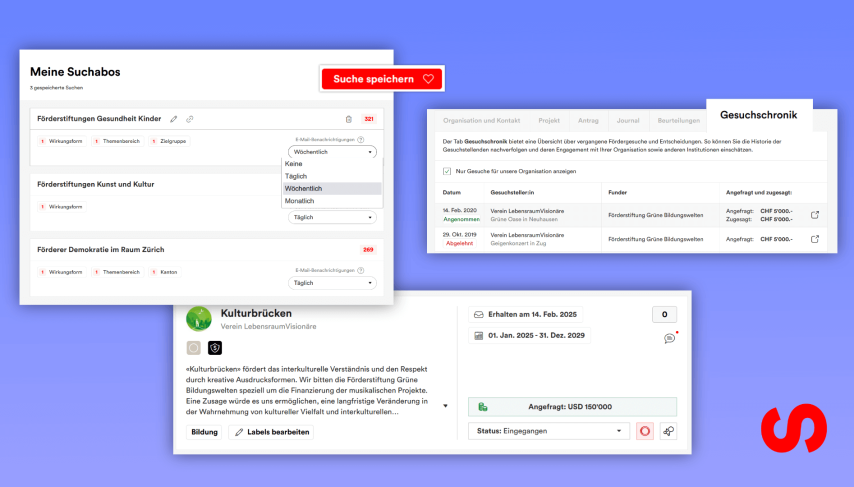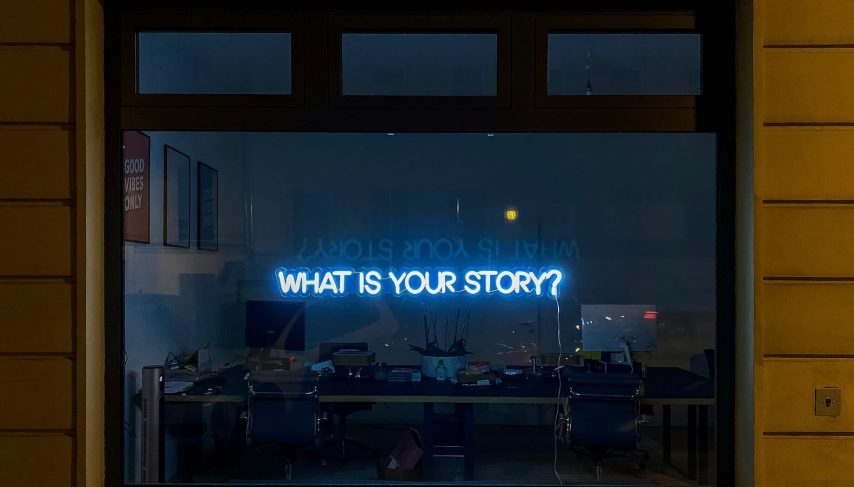
StiftungSchweiz’s new application and funding management system also entails a new approach to the structure of applications. The focus is on the newly designed “Inquiry” data field, which significantly facilitates precise and effective communication between funding organizations and applicants and replaces the cover letter without any loss of information. This blog post sheds light on the development of the approach and reveals how to formulate a good request.
Applications to grant-making foundations are structured differently depending on the receiving organization. If the receiving organization provides an application form, the instructions there must be followed. And: The new application and funding management also supports an individual application process based on a standard procedure. But first things first.
Application forms: A journey through the labyrinth
Together with our partner SwissFoundations, we have analyzed countless application forms over the past few months. To put it bluntly: what they have in common is a field for the applicant’s address – the rest of the form is customized.

But on closer inspection, most applications can be broken down into three elements:
1. information on the applicant organization and the contact person to be contacted for the application or the specific project.
2. information on the actual project for which the application is being made, its design, focus and desired impact, as well as the financial resources required to implement it.
3. a series of additional questions, which can vary greatly from foundation to foundation because they often relate to the specific purpose of the foundation or the funding priorities supported.
This third part is also freely customizable in the new application and funding management on StiftungSchweiz. Based on a clever template, funding organizations can add further specific questions, request additional documents or adapt the standard questions to their needs.
Only recorded once, but correctly: the project and organizational profile
The level of detail in which the organization and project must be presented varies – at StiftungSchweiz we build on the organization and project portraits that have already been recorded, although much of the information is voluntary but recommended. The more comprehensible and complete a project can be presented, the more likely it is to convince a funding organization (see our blog post What is a good project portrait?). Depending on the size of the project, a detailed budget broken down by year and cost type is also a must.
The one-time recording of project information also ensures consistency across all funding requests. This not only makes it easier to compare individual requests, but also facilitates collaboration between Funders. By not “bending” projects to suit the respective founder, they are recognizable in their true nature and appear more credible. A consistent project profile is the prerequisite for funders to form a funding alliance and secure sustainable funding for a project.
1. the organizational portrait
In the organizational portrait, we keep the information brief, as details can be viewed online. However, we already provide a number of important due diligence signals, e.g. the tax exemption checked by us or – in the near future – a badge for verified and complete data.
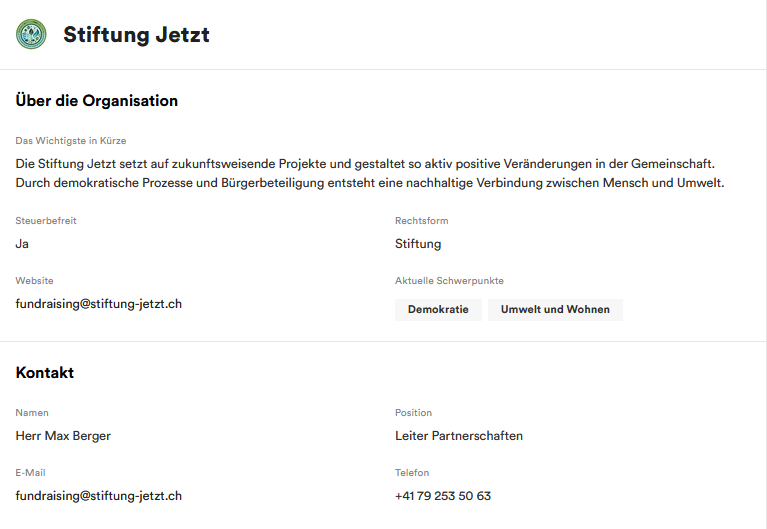
2. the project portrait
This is where an organization records the individual projects – both current and past (for the keyword “track record”, see also our blog post on the funding chronicle). A strong project portrait is convincing of a specific project, i.e. it brings out the different strengths. Large projects are sometimes broken down into individual meaningful sub-projects for effective fundraising.
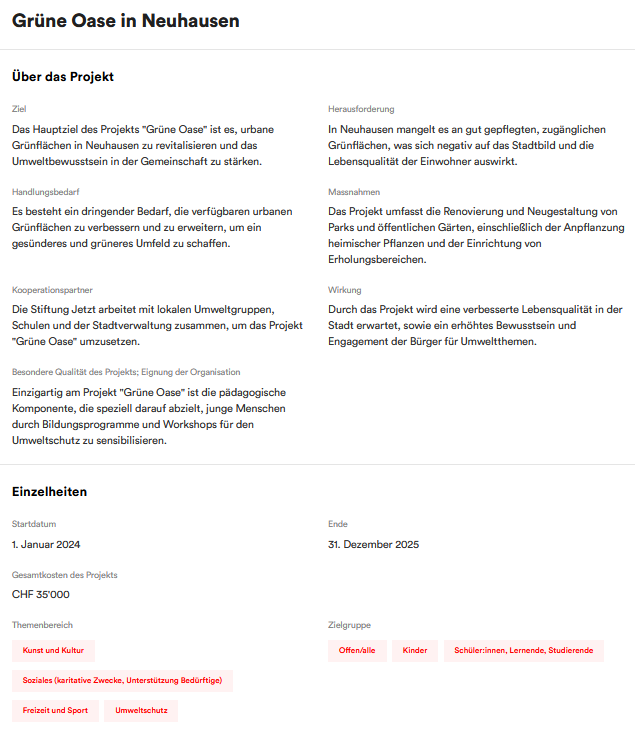
The request – a condensed cover letter
First of all: The application management at StiftungSchweiz relies on precise requests instead of obligatory cover letters. Funding organizations that still wish to receive a cover letter can of course add one as a mandatory field. However, we do not recommend this – why? A concise request supports the processing of an application far more than a verbose cover letter. It acts as the “cover sheet” of an application – and conveys the core content that was previously contained in a good cover letter.
The cover letter therefore played a central role in an application: it summarized the project once again, contained an explicit request to the funding organization and also specified the focus or project component to which the request related. With the intention of being as convincing as possible and arousing the funder’s interest, the letter also explained the positive effect a commitment would have on the project and thus the desired impact. Unlike the project description, this cover letter was also correctly tailored to the funding organization contacted.
However, with the help of technologies such as ChatGPT, cover letters can now be created efficiently and ready for printing, which is shaping the future of the application process. As a basis for funders’ decisions, the cover letter is likely to take a back seat in future (incidentally, this is one of the questions we want to explore in our Learning Journey on artificial intelligence, see the blog post “New rules of the game for philanthropy?”). In our eyes, however, this is not a great loss. After all, the art of writing a good cover letter often has little to do with the skills required for successful project implementation.
The inquiry plays a key role in the application and funding management of StiftungSchweiz because it forms the “cover sheet” of an application.
A good inquiry achieves the almost impossible: it combines an abridged version of the project with a specific request to the funding organization and a statement on the impact of a commitment. In contrast to overflowing letters, it gets to the heart of the matter.
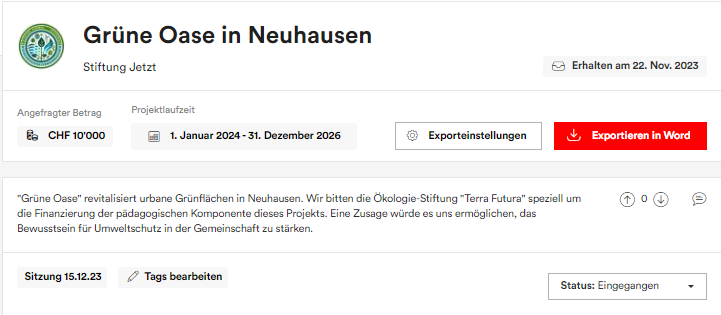
In the example above, the request is therefore made up as follows:
- Project: “The “Grüne Oase” project revitalizes urban green spaces in Neuhausen.” This succinct summary of the project description enables the office and the evaluating foundation board members to quickly grasp the essence of the project.
- Address and request: “We are asking the Ortsbürgergemeinde Schaffhausen specifically to finance the educational component of this project.” This addition makes it clear why the Foundation is being asked and what its contribution is to be used for. The requesting organization also shows that it knows and understands their mission.
- Impact: “A pledge would enable us to raise awareness of environmental protection in the community”. The conclusion brings an impact-oriented perspective into play and supports and supplements the motivation that has already been built up.
Another key question is whether an application really fits the requested funding organization – this question is also often dealt with in the cover letter. The standard template of the application form on stiftungschweiz.ch therefore includes a question on the accuracy of fit, in which an applicant organization can argue accordingly. And here too, brevity is the spice of life.

Convincing requests: best practice examples
The new application and funding management system from StiftungSchweiz differs from traditional application systems through this focus on precise and effective requests, which become the key to an application. Together with experts (and with a little help from generative AI), we have generated a number of other best practice examples that get to the heart of a query:
- Our “Silver Surfers” service makes it easier for older people to access modern technology. We are asking the Mercator Foundation Switzerland for support for the scientific monitoring of this initiative. With your help, we can better understand the impact of technology use on the quality of life of older people.
- The “Dorfmusikanten” initiative offers free music workshops for children in rural areas. We turn to the Swiss Arts Council Pro Helvetia to finance the mediation program. Your contribution enables us to make music education accessible to a wider community.
- The “gsund und munter” project teaches schoolchildren about healthy food. We are asking the Migros Culture Percentage of the Migros Cooperative Eastern Switzerland for special support for the production of teaching materials. With your support, we can get children interested in healthy eating in the long term.
- The cooperation project “ArtNet” strengthens the sense of community through low-threshold artistic projects. We would like to ask the Art Foundation of the Canton of Zug to finance the accompanying artist-in-residence program. Your help will enable us to involve local artists directly in community projects.
- The “CultiVert” initiative promotes environmentally friendly cultivation methods. We are asking the agricultural foundation “GreenGrow” for specific support for field trials with new, sustainable cultivation methods. Your help enables us to develop sustainable agricultural practices for young farmers in western Switzerland.
- Our “CosmoKids” project aims to offer astronomy workshops for schoolchildren. For the realization of the mobile observatories we ask the Zürcher Kantonalbank for financial support. Your contribution enables us to bring the fascination of the universe directly into Zurich’s schools.
Are you there? The new application and funding management system can be used immediately by funding organizations in Switzerland (or with a focus on Switzerland). The prerequisite is access to stiftungschweiz.ch at partner level.
We are now offering a two-hour “application workshop” in the form of a webinar. In the first part, we support nonprofits in convincingly developing their organizational and project profiles. In the second part, we focus on gradually refining their proposals to maximize their persuasiveness and clarity. Through targeted feedback, we work to ensure that the specific requests are inspiring and convincing. The number of participants is limited to 5 to 8 participating organizations per workshop to ensure good interaction.
Request workshop: The art of concise requests
Would you like to increase the effectiveness of your applications? Our application workshop will help you to create a convincing organizational and project profile. In an interactive session limited to 5 to 8 participants, we will equip you with the knowledge you need to be successful in the funding landscape. In the second part, we focus on the central “inquiry”, which is the key and quasi the “cover sheet” of a successful application. Through targeted feedback, we work to ensure that your current specific requests are inspiring and convincing.



